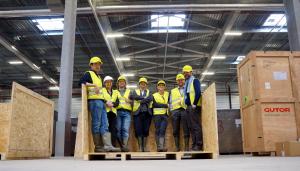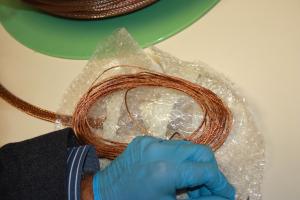Thin diagnostic coils to be fitted into giant magnets
Last week was marked by the first delivery of diagnostic components—Continuous External Rogowski (CER) coils—from the European Domestic Agency to the ITER Organization.
The manufacturing has been undertaken by two companies—Axon in France and Sgenia in Spain. The system has been delivered to the ITER Organization where it has undergone site acceptance tests and is now ready to travel to the next destination for the coils—Japan—for installation in the dedicated toroidal field coils. A number of the ITER diagnostics team members ensured the process went without too many "hitches." Practical lessons learned with this first delivery will be very useful for ensuring subsequent deliveries go smoothly and efficiently.



